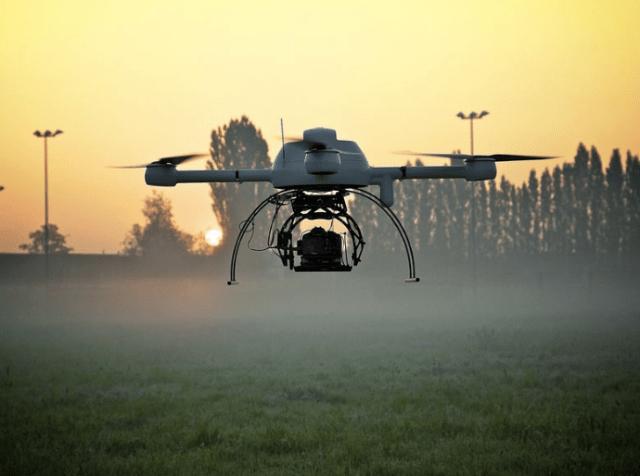A wellspring of interest in quadcopters for commercial applications is advancing globally. From Airware’s recent $10.7 million round from Andreessen Horowitz to the launch of AngelPad’s DroneDeploy, quadcopters are one of the hot, hardware trends that founders and VCs are latching onto.
This experimentation is also happening on the other side of the world. Russia’s UVS Avia is building higher-end microdrones to examine nuclear reactors and waste sites, along with doing search-and-rescue in remote areas.
They built a quadcopter that weighs about 1 kilogram, can fly above 100 meters and has at least 1 hour of battery life. It costs a hefty $40,000, but that’s because local Russian taxes effectively double the price and because they target government and military clients. Commercial drones for hobbyists cost a few hundred dollars, but often only have about 15 minutes of battery life. So far, UVS Avia has sold a “few dozen” drones.
It can be equipped with infrared vision, night vision or radiation protection to fly over sites like nuclear reactors or to monitor nuclear waste.
“Civilian versions weigh about 100 grams, while this is a kilo, which is a lot,” said CIO Maxim Shaposhnikov. “Everything is stronger and better.”
While the hardware for these drones is being commoditized, Shaposhnikov says the real advantage in the future will come from software.
“Normally, even for military use, all drones are managed by humans,” he said. “But our idea is to make the drones completely automatic, like maybe they could fly for months and charge automatically.”
The other thing they want to add is the ability for drones to communicate with each other. He said, you could eventually get 100 or more drones to monitor an entire city in a completely automated process.
“We think the whole industry is going in the same direction,” he said. “In five years, it will be really cheap to make drones, but the intelligence should be really advanced. New batteries are being developed that will allow a five hours of battery life. Everything is moving ahead, so software will be the key.”
The company has raised about 3 million euros in funding from private angels.
